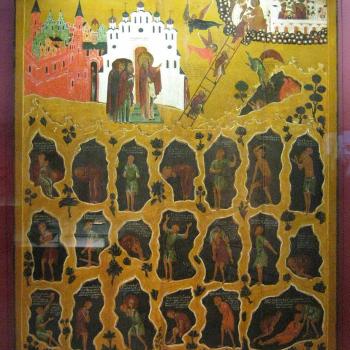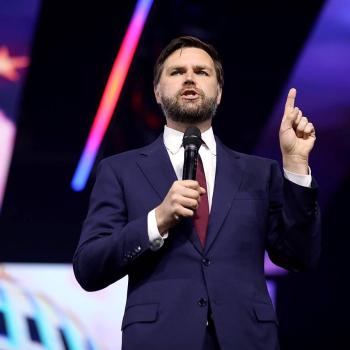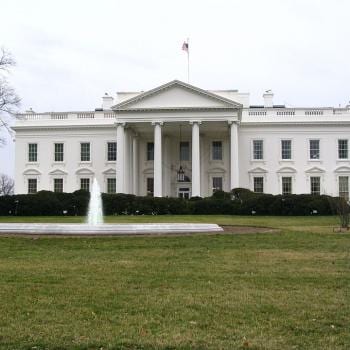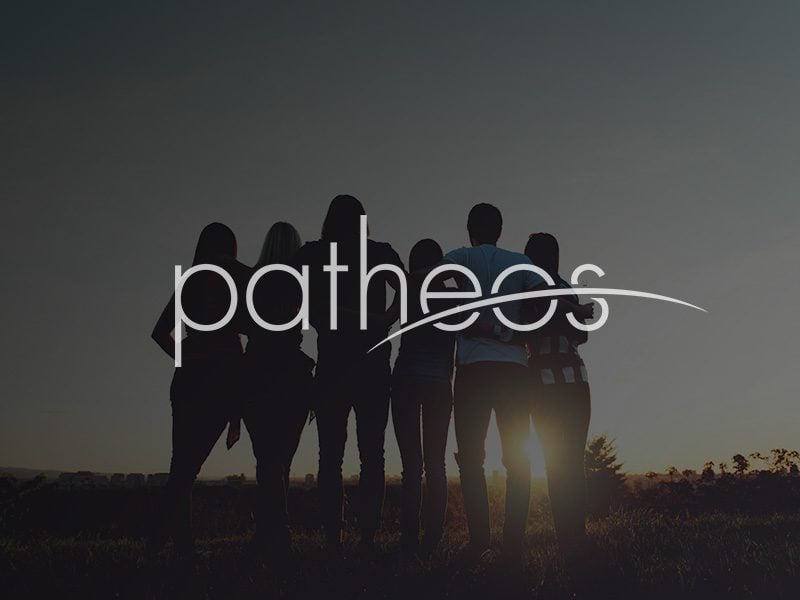Vox Nova is pleased to welcome another guest post by Jeannine Pitas.
“What if something goes wrong?”
The words played over in my mind as I boarded the train from Victoria Station to Gatwick Airport. “I can’t believe that’s all your taking,” my friend Rebecca had said earlier that day when I’d handed my small backpack – containing two and a half sets of clothing, one pair of pajamas, a towel, flip-flops, a flashlight, a few toiletries, my journal and a slim guidebook – into the coat check of the British Museum. Falling comfortably within the museum’s seven kilogram limit, the bag was stowed in a cupboard as we set off for a few hours of admiring Aztec sculptures and modern African art. I was happy to spend this time with an old friend in the UK before starting on the main focus of my trip: a four-week pilgrimage across Northern Spain.
Yes. I was about to walk the legendary Camino de Santiago. 690 kilometers of it, from Pamplona to the famous cathedral where the apostle James’ remains are buried. On my own for the first half, accompanied by my best friend for the second. Though I am a fairly seasoned traveller, I could not ignore the fear that had settled at the bottom of my stomach. I’d never travelled with so few possessions; I wasn’t in the right physical shape; I didn’t even have a working cell phone. What would I do if something went wrong?
Little did I know, as I boarded the early morning flight from London to Madrid, that I was less than 48 hours away from an answer to that question. This answer was not apparent as my plane touched down in Madrid, as I collected my hiking poles from the baggage carousel, as I knelt for a few quick prayers in the airport’s chapel. It did not become clear as I navigated the subway system to the Atocha Train Station, as I sped past wide-open swathes of red and brown countryside on the way to Pamplona. The answer was not given as I stepped off the train into a sea of revellers dressed in red and white, excitedly celebrating July 14, the final day of the famous San Fermín bull run, and awkwardly tried to blend in as fireworks exploded over our heads.
Nor did my answer become apparent the following morning, as I shuffled into a shop stocked with backpacking paraphanalia, acquired my credencial – the pilgrims’ passport that travellers to Santiago use to gain entry into the inexpensive hostels that dot the road to Santiago – and made my way out of Pamplona through fields of sunflowers, up a huge mountain called the Alto de Perdón (The Heights of Forgiveness – an apt name, as I definitely felt that I needed to forgive someone after that uphill trek in the noonday heat), then down the mountain to a village called Uterga where, after only three hours of walking, I decided I’d had enough for my first day.
It became clear when I took my contact lenses out of my eyes.
“Oww,” I winced as the lenses slid out followed by a disgusting yellow fluid. I could not see. In fact, I could not even open my eyes. Within minutes, the albergue (hostel) staff were calling an emergency hotline for help, and soon I was in a taxi accompanied by a British pilgrim named Gail – a professional singer turned journalist – on the way to a health clinic, where I was treated and, after three days of rest with a pirate-style patch over my right eye, given permission to restart my journey.
As I passed through those sunflower fields for a second time, I no longer had to worry about what would happen if (or when) things went wrong, as I now knew the answer. “The Camino provides,” fellow pilgrims kept telling me. “Wouldn’t it be great if we could all be this good to one another, all the time?” a Catalan man later mused on the walk out of an incredibly picturesque town called Estella. Closer to the destination, a grafitti message in a tunnel summed it up perfectly: “If all our leaders were made to walk the Camino together, in five weeks we’d have world peace.”
The Camino de Santiago is an experience like no other. Like the Hajj to Mecca and the Christian, Muslim and Jewish pilgrimages to Jerusalem, it is a journey with a long history, and many of contemporary pilgrims do indeed travel with the hopes of receiving a religious blessing. But the Camino is unique in that adherance to a creed is considered unimportant: anyone willing to spend eight hours each day walking with a pack on their back is considered a pilgrim, treated with utmost respect by the locals. And, while my frequent visits to the evening Pilgrims’ Mass and solitary hours hiking through the wild, picturesque meseta between Burgos and León gave me many hours of prayer and reflection, the most memorable moments were those shared with others.
Like many other pilgrims, I decided to walk the Camino in search of spiritual guidance. In the awkward space between defending my doctoral dissertation and earnestly seeking a job, I found that my mind was tired. For that reason, I unfortunately don’t have much to say about the beautiful Romaneque architecture of the church at Frómista or the Templar Castle in Ponferrada. Nearly five months after returning home, my memory instead returns to the people I met as I walked through vineyards and up mountains, as I cooked communal meals, as I bedded down each night in a different albergue – sometimes with sixty beds in one room.
I remember Joe, a former British karate champion from London, now a prison worker, looking for a new direction in his life, and Rosa, a Basque teacher who had walked three hundred kilometers by his side, neither one knowing the other’s language, but still communicating like old friends. I remember Silvia, a passionate engineer-turned-science teacher from close to where I’d begun my journey in Pamplona, coming to terms with her own life transitions. I remember Miguel, one of the many dedicated volunteers who offered two weeks of his summer to manage a pilgrims’ hostel, handing each of us a copy of a prayer he’d written as we said goodbye: “Never look back,” he advised us. And of course, I remember Gail, who, even though her feet were aching with blisters, took the time to accompany me to the health center in my moment of need.
After four weeks of walking through fields and forests, cities and villages, I received my final stamp and Compostela certificate; I knelt before the tomb of St. James and watched the impressive swinging of the buxafumeiro after the 12 p.m. pilgrim’s Mass;
I hoisted my backpack on my shoulders and, with some wistfulness and confusion, boarded the train from Santiago back to Madrid, then the plane from Madrid to London to my hometown of Toronto, back to my old life. But of course, it wasn’t my old life. I don’t think that anyone can walk the Camino de Santiago and expect to remain unchanged. The nature of those changes is not easy to see, and I trust that it will become clearer over time. But, as I bid a fond farewell to this year and eagerly look forward to the coming one, I proceed with the knowledge that we are all pilgrims on an unending journey. It is inevitable that at some point things will go wrong; suffering cannot be avoided. But, if we cast off ou fear and prejudice, we find that we do not have to face these hardships alone. Instead, we are companions on a shared journey, united in our search for healing and wholeness, walking together on the road toward grace.



















